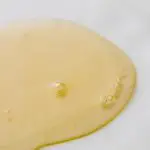Are you wondering if you can use a White Gorilla Glue Pen on wool fabric? Look no further! In this article, we will explore the compatibility, advantages, and limitations of using a White Gorilla Glue Pen on wool.
Follow our step-by-step guide to learn how to apply the glue effectively on wool fabric and discover tips for ensuring a strong bond.
However, it’s crucial to be aware of precautions and considerations when using this glue on wool.
Let’s dive in and find out if the White Gorilla Glue Pen is suitable for your wool fabric projects!
Table of Contents
Compatibility of White Gorilla Glue Pen With Wool Fabric
Yes, you can use the White Gorilla Glue Pen on wool fabric. The glue pen is designed to work on various materials, including fabric, and wool is no exception. Using this glue pen on wool fabric has its pros and cons.
One of the advantages of using the White Gorilla Glue Pen on wool fabric is its strong adhesive properties. It creates a durable bond that can withstand wear and tear, making it ideal for repairing or attaching fabric pieces. Additionally, the glue pen dries clear, ensuring that it doesn’t leave any visible residue on the wool fabric.
However, there are also a few considerations to keep in mind. The glue pen may not be suitable for delicate or thin wool fabrics, as it can leave a noticeable mark. It’s always recommended to perform a small test patch on an inconspicuous area of the fabric before applying it extensively.
If you prefer alternatives or substitutes to the White Gorilla Glue Pen, there are other fabric glues available in the market. These include E6000 Craft Adhesive, Aleene’s Original Fabric Glue, or Beacon Fabri-Tac. These fabric glues offer similar adhesive properties and are specifically designed for fabric applications.
Advantages and Limitations of Using White Gorilla Glue Pen on Wool
One advantage of using the white Gorilla glue pen on wool is its ability to bond quickly and securely. The glue pen is designed to provide a strong adhesive bond, which ensures that your wool fabric stays in place. It is ideal for repairing small tears or attaching embellishments to your wool garments.
Another advantage of the white Gorilla glue pen is its ease of use. The pen applicator allows for precise application, reducing the chances of mess and ensuring that the glue is applied exactly where you need it. This makes it convenient for any DIY projects or quick fixes you may have with your wool items.
However, there are limitations to using the white Gorilla glue pen on wool. One limitation is that it may not be suitable for all types of wool fabric. It is always recommended to test the glue on a small, inconspicuous area of your wool item before applying it to the entire garment. Some wool fabrics may be more delicate or may react differently to the adhesive.
Additionally, the white Gorilla glue pen may leave a visible residue on darker colored wool fabrics. This can be unsightly and may require additional cleaning or treatment to remove.
Step-by-Step Guide: Applying White Gorilla Glue Pen on Wool Fabric
To start applying the white Gorilla glue pen on wool fabric, begin by preparing the surface. Make sure the fabric is clean and free from any dirt or debris. Gently brush off any loose fibers or lint using a soft brush or cloth. This will ensure a smooth and even application of the glue.
Before applying the glue, it is important to test it on a small, inconspicuous area of the fabric to ensure it does not cause any damage or discoloration. Once you are confident that the glue is safe to use, apply a thin and even layer of the white Gorilla glue pen onto the desired area of the wool fabric.
Press the fabric together firmly to bond the glue and hold it in place. You may also use pins or clips to secure the fabric while the glue dries. Allow the glue to fully cure according to the manufacturer’s instructions before handling or washing the fabric.
While the white Gorilla glue pen is a suitable adhesive for delicate fabrics like wool, there are alternative fabric adhesives available in the market specifically designed for these types of materials. It is always a good idea to explore different options and choose the adhesive that best suits your needs and preferences.
Tips for Ensuring a Strong Bond Between White Gorilla Glue Pen and Wool Fabric
For a strong bond between the white Gorilla glue pen and your wool fabric, ensure that the surface is clean and free from any debris. Here are some tips to help you achieve a successful bond:
-
Use alternative adhesives: While the white Gorilla glue pen is a popular choice for bonding wool fabric, there are other adhesive options available that may work better for your specific project. Consider using fabric glue or a needle and thread for a more secure and seamless bond.
-
Test the glue on a small, inconspicuous area: Before applying the glue to the entire wool fabric, it’s important to test it on a small, hidden section. This will ensure that the glue does not discolor or damage the fabric.
-
Apply a thin, even layer of glue: Too much glue can seep through the fabric and create a messy appearance. To avoid this, apply a thin and even layer of glue to the surface of the fabric.
-
Allow sufficient drying time: Patience is key when working with glue. Allow the glue to dry completely according to the manufacturer’s instructions before handling or wearing the fabric.
-
Avoid common mistakes: When using the white Gorilla glue pen on wool fabric, avoid applying too much pressure, as it can cause the fabric to stretch or distort. Additionally, make sure to store the glue pen in a cool and dry place to prevent it from drying out.
Precautions and Considerations When Using White Gorilla Glue Pen on Wool
When using the white Gorilla glue pen on wool fabric, it’s important to take certain precautions and considerations to prevent damage and ensure a successful bond. While the glue pen is known for its strong adhesive properties, it can potentially cause issues when used on delicate fabrics like wool.
To prevent damage to your wool fabric, follow these precautions:
-
Test on a small, inconspicuous area: Before applying the glue pen to the entire garment, test it on a small, hidden area of the fabric to ensure that it doesn’t cause any discoloration or damage.
-
Use sparingly: Apply the glue pen in small, controlled amounts to avoid saturating the fabric. Too much glue can seep through the fibers and leave visible marks.
-
Allow ample drying time: Give the glue enough time to fully dry and cure before handling or wearing the garment. This will ensure a strong bond and prevent any accidental separation.
In addition to these precautions, it’s worth considering alternative adhesive options for wool fabric. While the white Gorilla glue pen can work well in some cases, there are other adhesives specifically designed for fabric that may be more suitable. Here are a few alternatives to consider:
| Adhesive Type | Pros | Cons |
|---|---|---|
| Fabric glue | Easy to use, dries clear, washable | May not provide as strong of a bond as Gorilla glue |
| Fusible web | Bonds fabric layers together permanently | Requires heat application, not suitable for all types of fabrics |
| Sewing | Provides the strongest bond, allows for flexibility | Requires sewing skills, time-consuming |
Conclusion
In conclusion, using the White Gorilla Glue Pen on wool fabric can be a convenient and effective option. It offers advantages such as easy application and a strong bond.
However, it’s important to consider limitations, such as the potential for visible glue residue. By following the step-by-step guide and ensuring a thorough bond, you can achieve a reliable result.
Remember to take precautions, such as testing on a small area first, to avoid any potential damage to your wool fabric.
- Why Is Red Velvet Not Red? - April 25, 2024
- How Do You Describe Velvet Fabric? - April 25, 2024
- How Strong Is Velvet? - April 25, 2024







